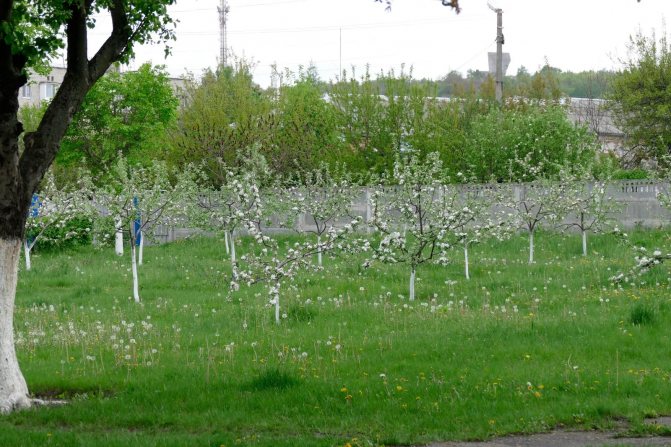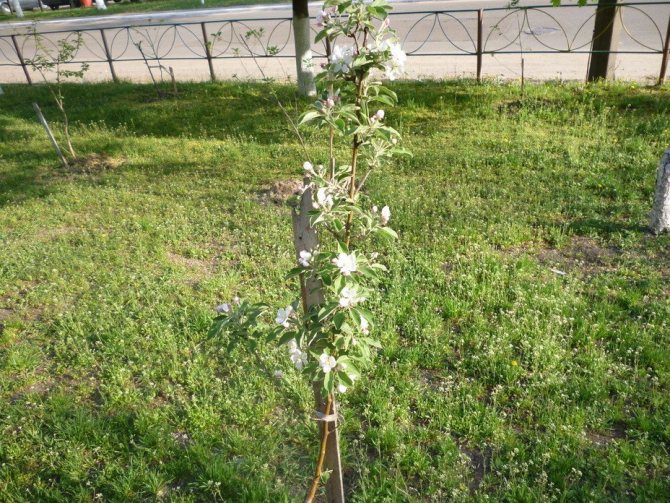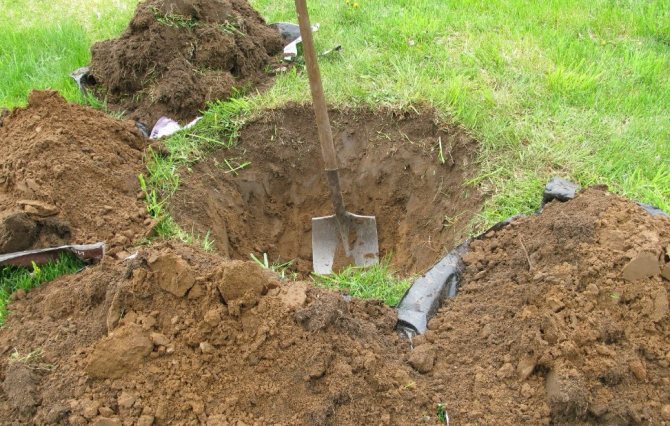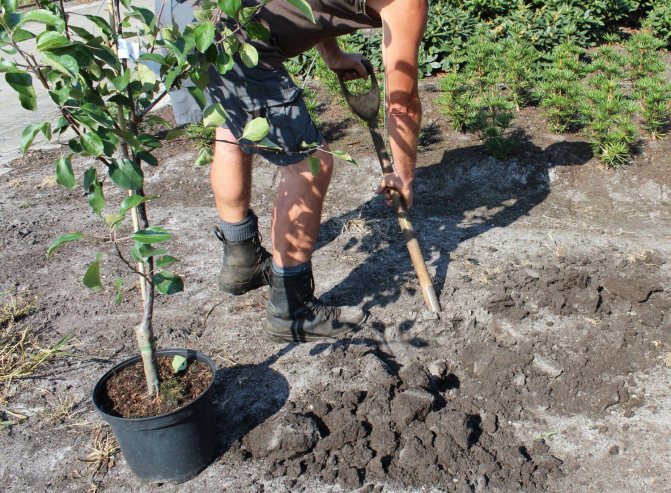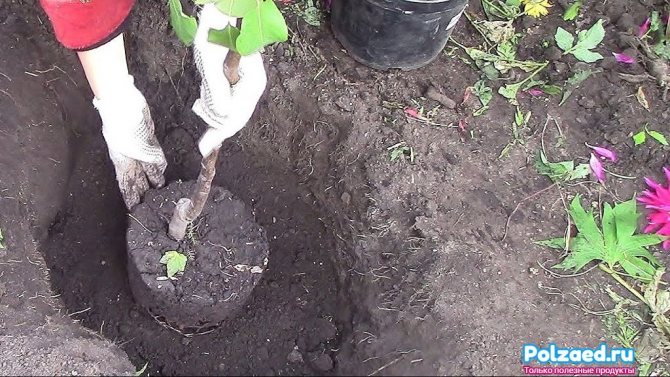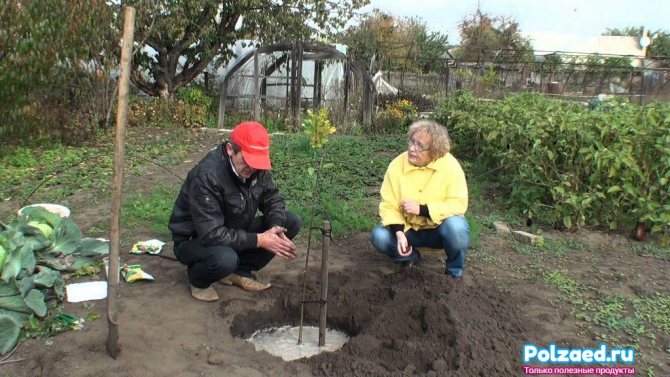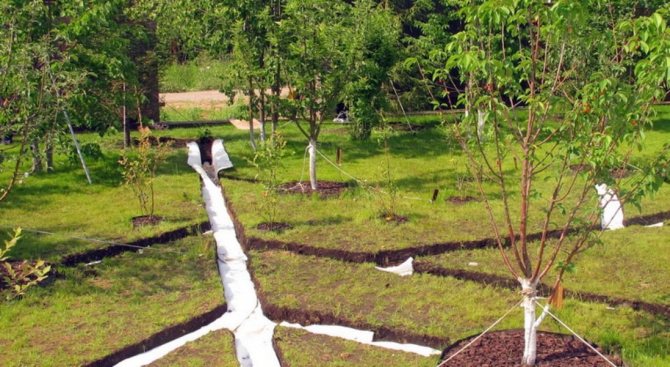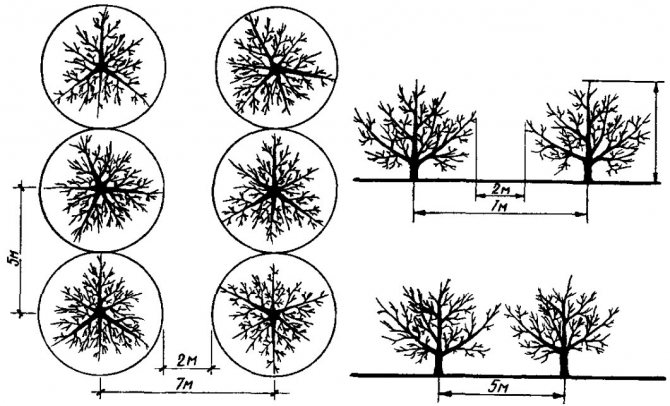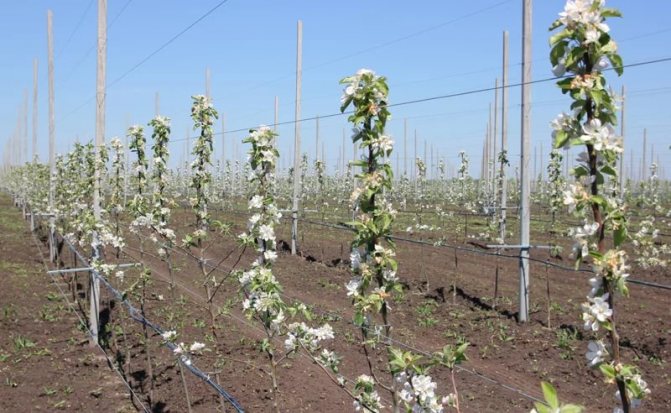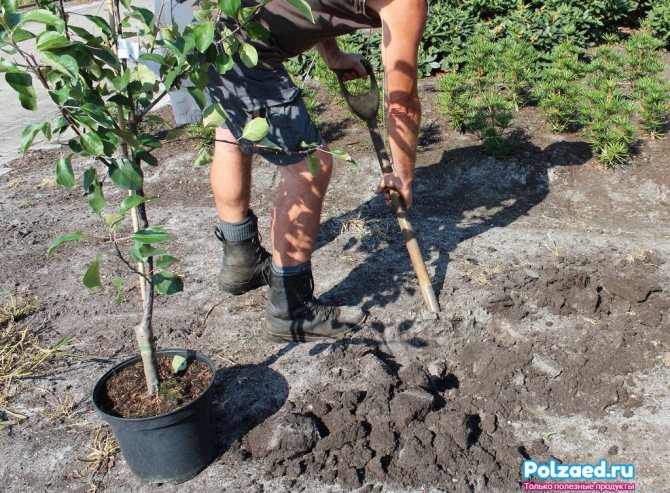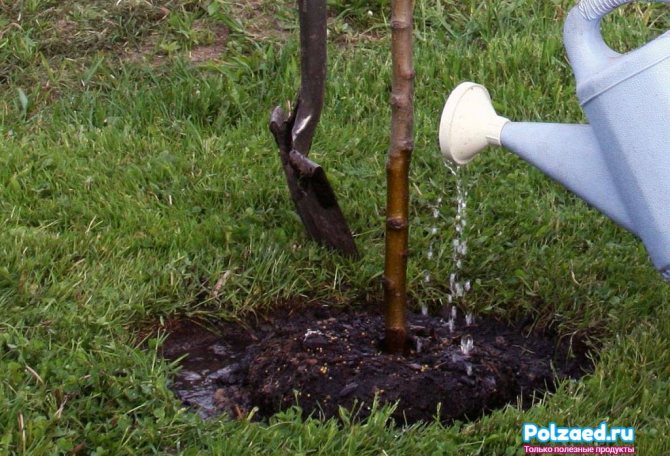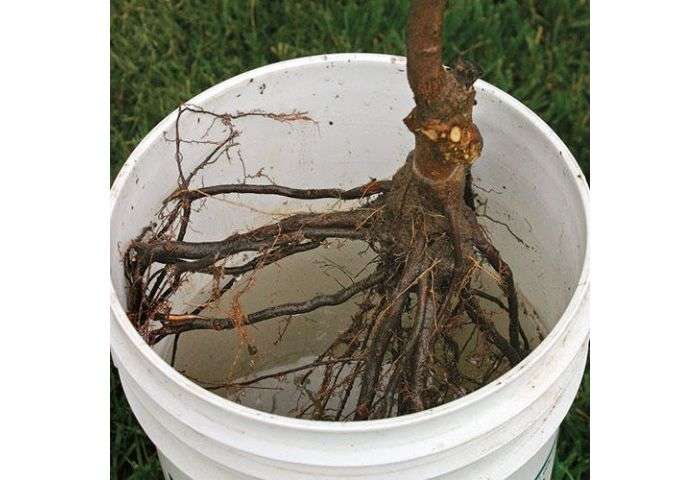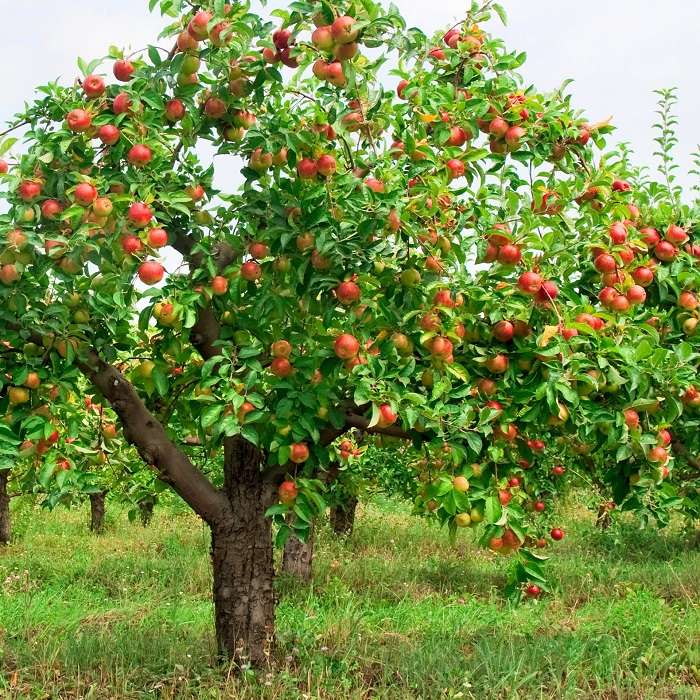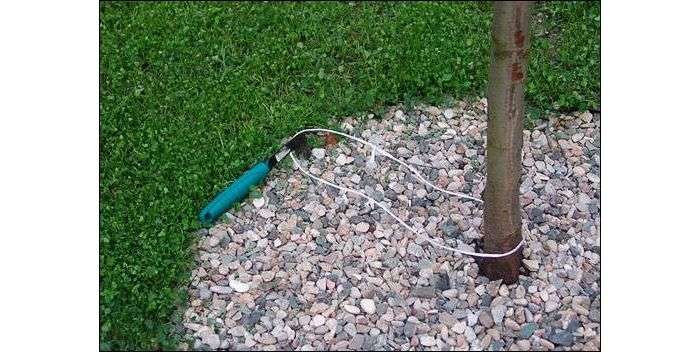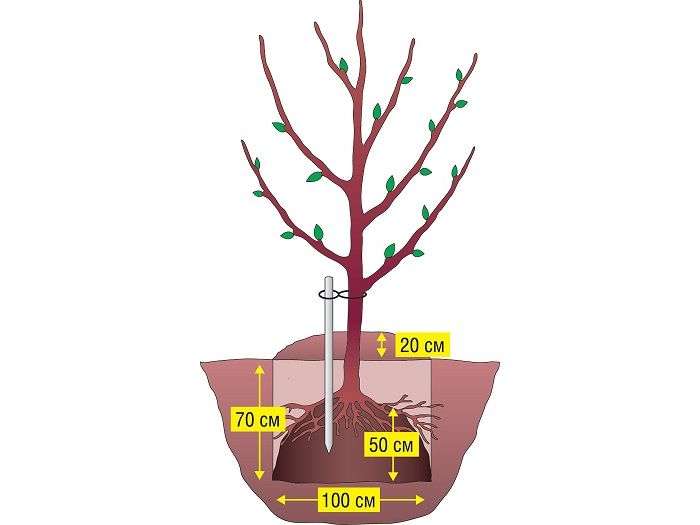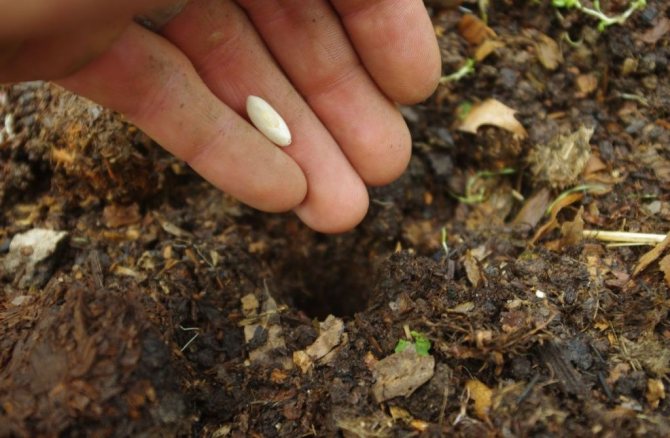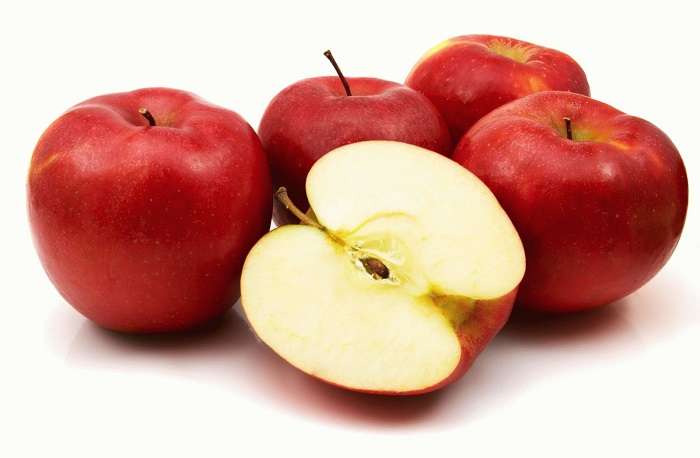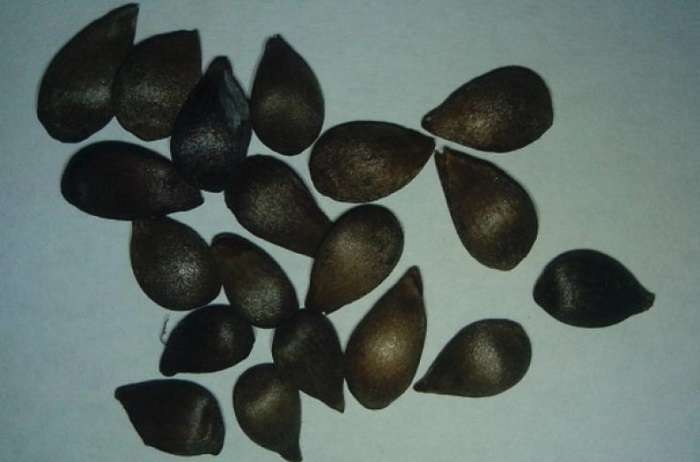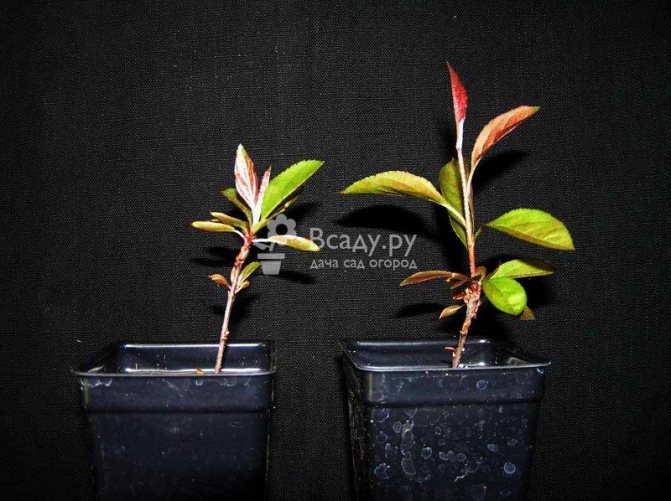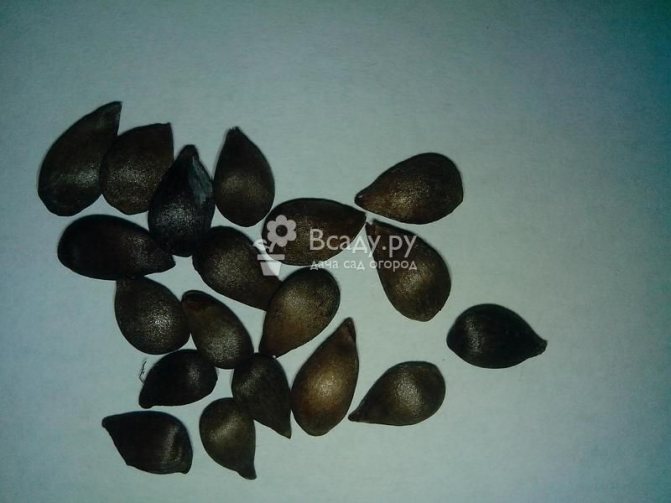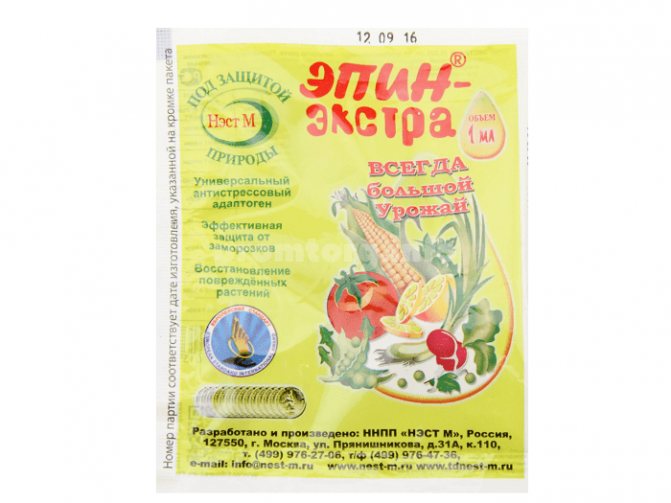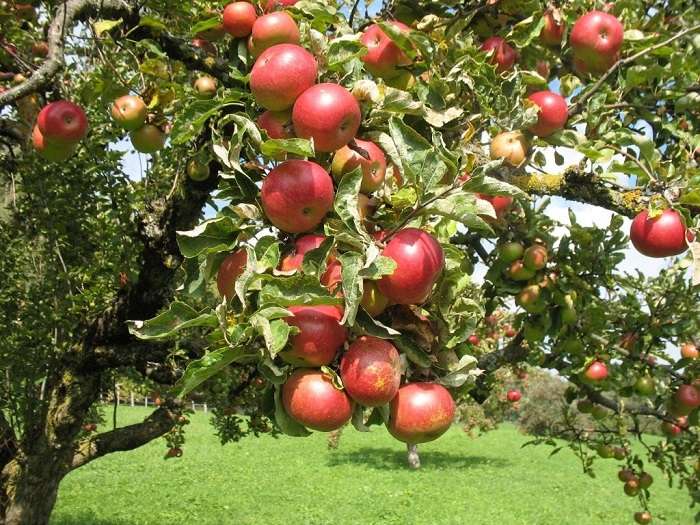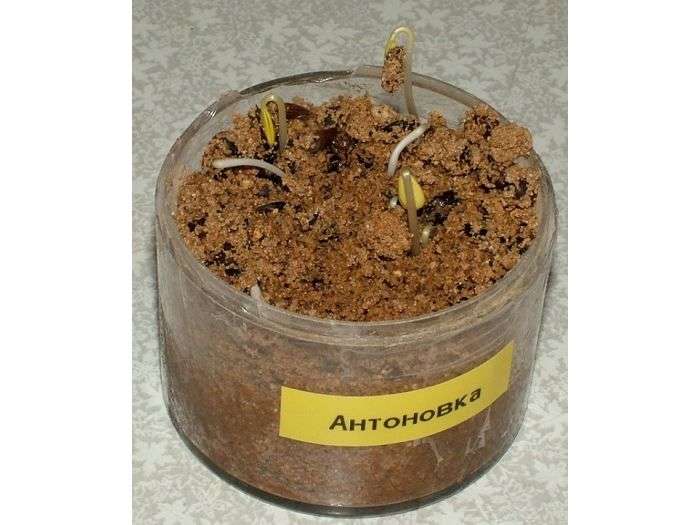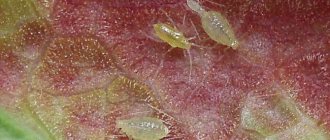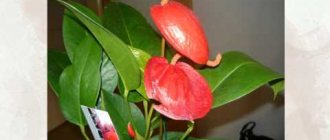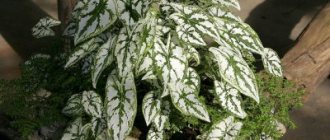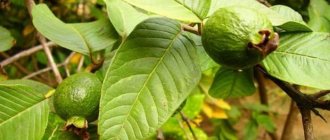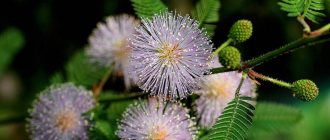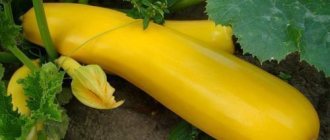Everyone knows that buying a seedling by the name of a variety is not even buying a "pig in a poke", but a real lottery (and, moreover, not always a win-win). Growing your own seedling from the seed of the apple you like is not a gardener's dream?
How convenient - they bought apples, liked the taste, collected seeds, planted, grew. Everything is very simple, but the laws of nature dictate their own.

How to choose an apple variety?
Growing an apple tree starts with variety selection from a huge list.
First you need to decide on ripening period:
- Summer varieties - early ripening, do not lie long;
- Autumn - ripen in early to mid-autumn, stored for 2-3 months;
- Winter apples - ready for harvest from mid-autumn, some varieties ripen by next summer.
Next in importance is zoning varieties.
Advice! The best option is to buy seedlings from a local nursery. This is a guarantee of survival and successful growth of the tree.
If this is not possible, choose a variety suitable for growing in the region.
The last one is to choose according to taste, color, size.
When it grows up
The next difficulty in growing an apple tree is that the seeds are poorly germinated, but you can outsmart nature a little. Simple manipulations can significantly increase the number of "awakened" seeds.


Wild plants compensate for the low germination rate with the number of seeds sown. The gardener acts differently - he sows seeds with a margin for weak shoots. Therefore, for the winter autumn sowing in the "school" (mini-bed for new plants) for apple seedlings, it will be necessary to stock up on seed material with a stock.
Soil preparation
The earth dig up 2-3 months before planting, at the same time removing perennial weeds... You can postpone the event until autumn. Then, as nitrogen fertilizers are planted siderates (lupine, beans, clover and others).
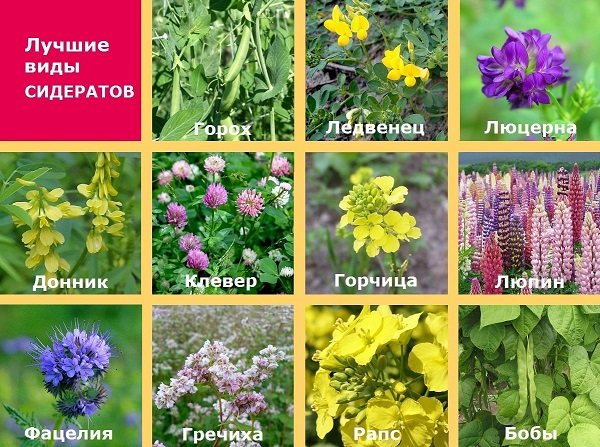

Siderata.
Dense clay soil they dig into the depths of the shovels on 2 bayonets. It is recommended to add for each m²:
- 2 buckets of sand;
- 1 bucket of sawdust;
- 12-15 kg of ready-made humus or compost;
- 0.5 kg of fluff lime.
Light sandy soils should be compacted by adding per m²:
- 2-3 buckets of clay;
- 1 bucket of peat, rotted manure;
- 0.5 buckets of ash.
Growing "shkolki" by sowing in a garden bed
The easiest way is to simply sow apple seeds directly into the garden in the fall, then you can choose the strongest seedlings in the spring and continue growing apple seedlings already in pots.
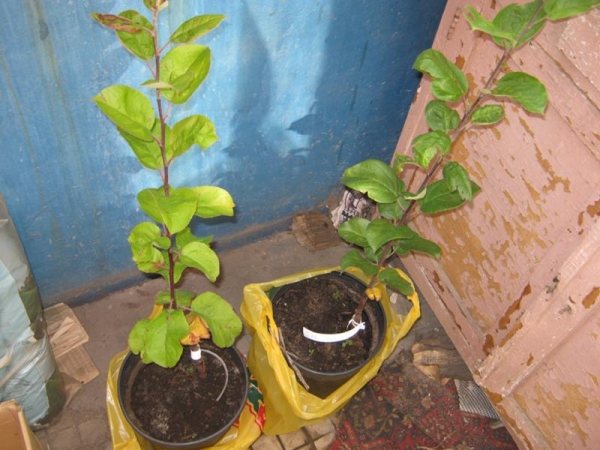

Seeds are sown thicker, with a margin, to a depth of about 2 cm with a row spacing of about 25-30 centimeters.
It is believed that such seedlings should, before planting in a permanent place in the garden, transfer two more transplants during the first 2-4 years of life.
- From the “shkolka” into a deep dish filled with earth (to form a strong taproot).
- After a year in a pot, transplant into an even deeper container (for example, a bucket). At the same time, the central root must be cut off so that the lateral roots grow.
- The last transplant is to a permanent place in the garden.
Landing pit
The next step is to prepare landing pit... To do this, in the designated place, we dig a recess of a suitable size. Fold the top, fertile layer on one side.Lower, empty - to the other:
- For tall trees - 100-120 cm * 60-80 cm;
- For half-dwarfs - 100 cm * 50 cm;
- For a tree on dwarf rootstock - 90 cm * 40 cm.
Important! A planting stake is driven into the center, on which the tree will lean for the first time.
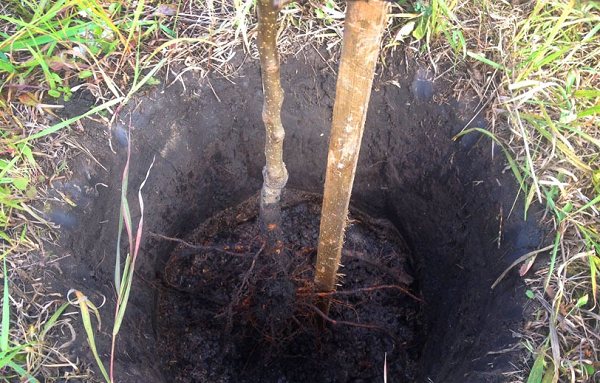

The location of the peg in the planting pit.
What needs to be done for the seedlings to survive the first winter safely
The seedlings are still weak before the first winter, so they must be protected from frost. This will help keep them from freezing completely and provide a rich harvest next year.
During the summer, around the tree, you need to periodically loosen the ground, fertilize it, water it and protect it from pests. Never leave foliage under the trunk for the whole winter, because the pests in it will harm the tree. In the fall, seedlings are treated with copper sulfate to protect them from pests. In addition, all damage is covered with garden pitch, the branches and trunk are whitewashed with lime.


They cover apple trees only at the moment when the movement of juice in them has already stopped
Apple trees are sheltered only at the moment when the movement of juice in them has already stopped, and constant frosts are observed on the street. As a heater, agrofibre, felt, burlap, sunflower stalks and more are suitable. Having wrapped the trunk with insulation, after the appearance of snow, sprinkle the seedling with them.
Planting a seedling
- Before planting, inspect the root of the seedling;
- Cut off rotten, broken off and dry parts;
- The seedling is placed in the center of the finished pit;
- The roots are evenly straightened;
- Sprinkle with earth, shaking slightly to fill all the voids;
- They trample the ground, putting their toes to the trunk;
- The apple tree is watered abundantly and tied to a stake.
Read more about how to grow an apple tree from a seedling here.
Errors when planting fruit seedlings
No one is immune from mistakes, even experienced gardeners. If the planting rules are violated, some factors negatively affect the development of a young apple tree.


In order to avoid the typical mistakes made when planting an apple tree in the fall, you need to study them ahead of time:
- Some gardeners are confident that it is better to plant seedlings that are 3 or more years old. But this is not the case. Younger seedlings adapt more easily and take root in a new place.
- There is no need to strive to put a lot of mineral fertilizers into the pit. Because of this, an aggressive environment appears in the root layer of the soil, leading to the death of beneficial microflora.
- Do not use fresh manure during planting. When decomposing, it releases gaseous substances: hydrogen sulfide and ammonia, which strongly inhibit the roots of the seedling.
- If you plant a seedling in a place that has recently been dug, and the soil has not settled on it, this can lead to excessive deepening of the root collar. The development of a young tree will be inhibited.
- There is no need to purchase seedlings in advance. Buy them during planting season. In this case, there is confidence that they have already managed to go into a state of dormancy and are prepared for wintering.
Watering of young apple trees is recommended in the evening.
Planting an apple tree in autumn with seedlings will only be crowned with success when the planting time is correctly determined, a good planting material is planted, a good site is selected, the holes for planting are correctly made and the planting itself is skillfully performed. Then you can count on a high yield of apples in the garden.
Protection
Timely prevention and protection of fruit trees will get rid of 90% of problems planting care. Methods to help:
- Agrotechnical - selection of varieties, weed control, fertilizers;
- Physical and mechanical - collection of pests, sheltering;
- Biological - preservation of beneficial insects, attraction of birds;
- Chemical - insecticides.
Attention! Disease is easier to prevent than fight it.
Look at the video of Oktyabrina Ganichkina's advice on growing apple trees:
Where to plant an apple tree on the site
This is the first question that needs to be resolved when starting to plant an apple tree. The health of the plant, the duration of its life and the regularity of fruiting depend on the correct choice of the place and growing conditions. DFor an apple tree, it is advisable to choose a place that will be reliably protected from northern winds. Such protection can be provided by tall trees, fences and building walls located to the north or northwest of the planting site. Moreover, the distance to them should be such that no shadows are created. The apple tree loves good sunlight and ventilation.
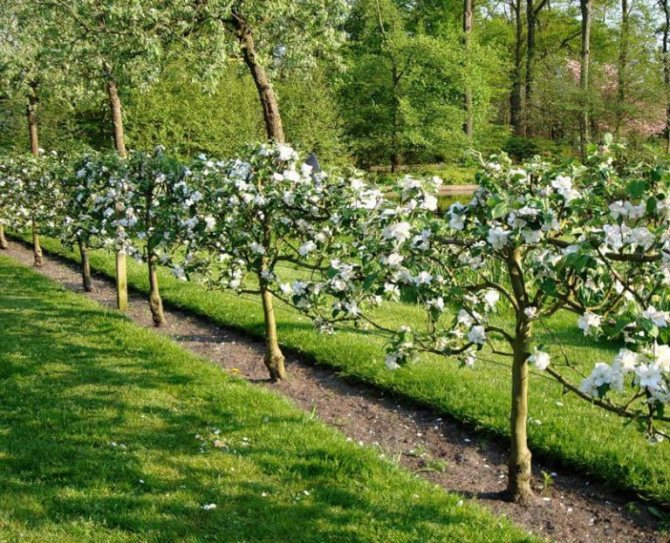

Apple trees grow best in well-lit and ventilated areas with natural protection from cold northerly winds
In partial shade, there is a risk of reduced yields, stretching of trees in height, as well as the formation of dampness, leading to various diseases. For the same reason, you cannot choose flooded, wetlands. Areas with a close (up to 1–2 meters) groundwater table are also unsuitable. The best choice would be a site on a small (10-15 °) southern, southeastern or southwestern slope.
Is it possible to plant an apple tree in the place of the old
The unequivocal answer is no. The fact is that the soil gets tired and depleted for many years. In addition, it accumulates in large quantities specific inhibitors secreted by the roots of the old apple tree, as well as pathogens and pests.
An inhibitor (lat. Inhibere "to delay") is a general name for substances that suppress or retard the course of physiological and physicochemical (mainly enzymatic) processes.
Wikipedia
It is best to plant an apple tree on rested soil after three to four years of growing green manure or similar crops. If there is not enough space, you can, of course, try to dig a bigger hole, fill it with a large amount of fertilizers, macro- and microelements, etc. But this will take a lot of work, but the result is still not guaranteed. Whatever the big pit, in a few years the roots will go beyond it. And when planting a new garden, you should not choose a place after uprooting the old one.
Apple planting distance from the fence
The distance of tree planting from neighboring fences is usually regulated by local governments or by the charters of horticultural associations and cooperatives. As a rule, tall trees are allowed to be planted no closer than four meters, and undersized trees no closer than two meters to the border of the site.
Planting apple trees
Most often, apple trees in the garden are planted in rows. The distance between them should ensure ease of maintenance, good illumination and ventilation of plants. The best placement option is one in which the rows are located from east to west. In this case, optimal lighting conditions are created. The distance between the rows is chosen from three to four meters for low-growing apple trees with a small crown diameter, up to six to seven meters in the case of growing tall varieties. Planting spacing in a row from 0.8-1.5 meters for columnar varieties and up to six meters in the case of tall trees with an extensive crown.
Good and bad neighbors of the apple tree
Apple trees get along well with many types of fruit plants and, subject to the above planting intervals, will grow and bear fruit calmly. The most successful neighbors are:
- plum;
- quince;
- cherry;
- pear.
But there are also unwanted neighbors. It:
- nut;
- sea buckthorn;
- viburnum;
- elder;
- spruce;
- thuja;
- Pine.
Soil for the apple tree
It is believed that the apple tree is unpretentious and can grow on any soil. But this is a delusion. In fact, this crop requires certain soil parameters, on which it will show the best results. The All-Russian Research Institute of Horticulture named after I.V. Michurin recommends soils for apple trees that have the following characteristics:
- Loose, porous structure with good capillary water holding capacity.
- Weakly acidic reaction in the range of pH 5.1-7.5.
- Carbonate content is not more than 12-15%.
- Solonetzicity, sulfate and chloride salinization are unacceptable.
- High microbiological activity combined with a humus content of at least 2%.
These conditions are best met by loamy, sandy loam soils and chernozems. Of course, it is far from always possible to find a plot with soil that meets the specified indicators. Often, real conditions are far from ideal.
How to grow an apple tree from an old apple tree?
It happens that in a fierce winter the apple tree freezes out. The variety is excellent and it is a pity to part with it. If a lower part alive, there is a chance to grow on it new tree.
Saw off the trunk before sap flow to living wood... Smear garden pitch. After a while will appear new sprouts... Remove shoots from the stock immediately. And on the basis of the rest, you can form a new crown.
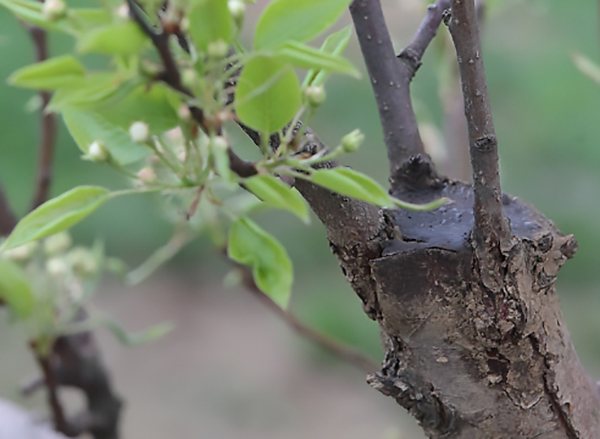

New shoots on the apple tree stump.
Another way, how to grow a new one from an old apple tree, is possible if there is cuttings the right grade. Without waiting for overgrowth, do inoculation in the cleft or behind the bark... Further care as for a young tree.
What are we going to plant?
How to choose seeds to grow an apple tree at home?
For cultivation, take apple seeds only from your area of residence, varieties must be zoned, at the genetic level adapted to the characteristics of the climate. If you like purchased apples, be sure to ask the seller: "Where did the apples come from?"
If the variety is southern, there is even no point in germinating seeds. The seedling will surely die in the winter. You will lose time and all confidence in the opinion and advice of experienced gardeners.
Good quality seed comes from apples harvested in the fall. Choose the most beautiful and delicious fruits that have grown on the outer branches. The side of the crown, well-lit by the sun, is better supplied with the nutritious sap of the tree, the seeds of such fruits have greater vitality. Selected seeds should be of the correct shape, large, with a characteristic dark color.
How to reanimate an apple tree?
The apple tree has grown, aged and does not give a crop? Do not rush to uproot it. On its basis, it is really possible to grow young tree, which will again delight you with a delicious harvest.
First of all they carry out sanitary inspection... With a sharp knife cut the bark trunk and skeletal branches for detection rot and rottenness... 2/3 of the crown is cut out mercilessly, leaving young, strong shoots, shortening them in half. The affected areas are cleaned to the healthy part and treat a mixture of clay and mullein.
A radical way is to cut the tree at the root. Grow a new tree from the young growth. Tempting but risky... The tree may not survive such execution.
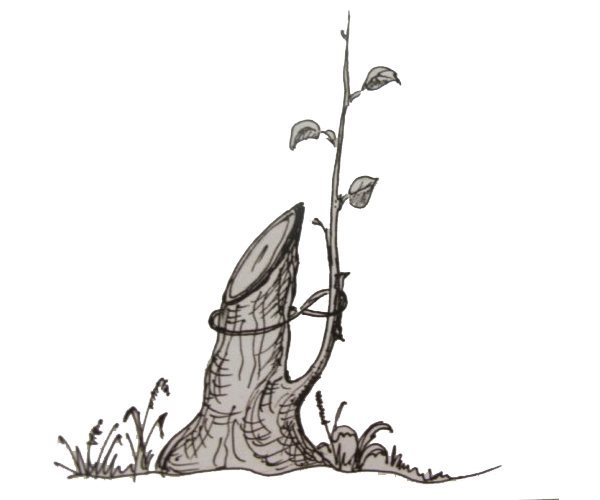

Reanimation of an apple tree from a young growth.
Important details
Before you set the task - to grow an apple tree from a seed - you need to find out what specific features the soil has on your site and the climate of your region. From these considerations, the method of sowing the seeds is chosen.
A harsh winter is easier for a tree with deep roots. In this case, you must choose an autumn planting in the ground.
If groundwater is close to your site, grow seedlings in a tub, not allowing the taproot to develop. But such plants are less winter-hardy - the trunks must be insulated for the winter.
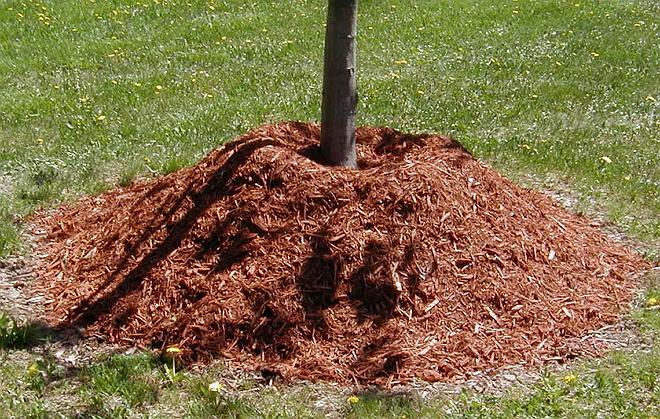

How to grow an apple tree from a seed, cuttings, branches?
Grow your seedling much more reliablethan buying from strangers. A stalk of a favorite variety, grafted onto a local wild game, has more chance of survivalthan a tree brought from afar.
A sapling purchased on the market is a cat in a poke. However, an apple tree grown from a seed does not always inherit the properties of its parents.
Therefore, fruit crops are propagated by cuttings or branches.
Read more about growing from seed, cuttings and branches here.
What will grow
There are a lot of various rumors about growing apple trees from seeds, which are quite reliable and clearly fantastic. In fact, things are not so hopelessly confusing. For the formation of an ovary from a flower, pollination is necessary.
The genetic code of the setting seed is, at best, only half dependent on the mother plant. The second part brings in pollen, the origin of which is completely unknown. Insects could have brought it from any rosaceous plant, the closest botanical relative of the apple tree.
In addition, dominant and recessive genes, various mutations that occur for completely natural reasons - abnormal temperature, too active sun and other natural surprises have a certain effect on the gene set.
Breeding methods for apple trees
For the propagation of apple trees, it is mainly used vegetative way:
- Inoculation;
- Inoculation by cutting;
- Reproduction by layering;
- Rooting cuttings.
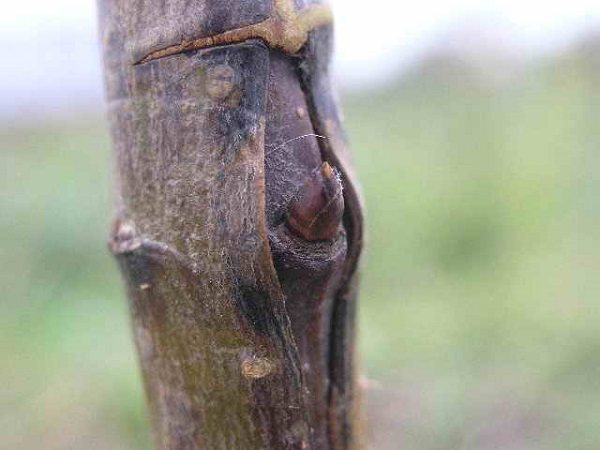

Inoculation.
This option helps to preserve the original qualities of the parent forms.
Read more about all methods of breeding apple trees in this section.
Historical reference
Once in 1963. a Canadian farmer on an apple tree noticed an unusual branch in all respects. A spontaneous mutation has occurred. For whatever reason, it is no longer important, but all existing columnar apple trees are direct descendants of the branch that was propagated vegetatively.
If an ordinary apple tree does not always convey varietal qualities during seed reproduction, then the seeds of columnar ones are not even fully pollinated. So far, the results are not encouraging. But once a useful mutation has occurred, it can be repeated ...
More useful:
Top dressing, fertilization
In spring, young trees are introduced with a solution of urea (2 tablespoons per 10 liters of water) - this is a root top dressing. For foliar (May-June) "Ideal" or sodium humate, in solution (1 tablespoon per 10 liters of water) is well suited. In September, it is recommended to carry out one more root feeding with a phosphorus-potassium solution (2 tablespoons per 10 liters of water).
A kind of seasonal feeding scheme for adult apple trees involves a 4-time fertilization. The first is scattered and buried in the soil, 500 g of urea under each tree, the second - at the beginning of flowering, a mixture of potassium sulfate, urea, superphosphate infused for several days (80/50/100 g per 20 l of water). The third - after the color has dropped, a mixture of nitrophoska, sodium humate (100/2 g per 20 l of water) and the final one, after removing the fruits - a bucket of humus under each tree.
Preventive treatments for pests and diseases should also take place, they can be combined with fertilization. Planting an apple tree is the beginning of a long journey from a young seedling to an adult spreading tree with liquid sweet fruits.
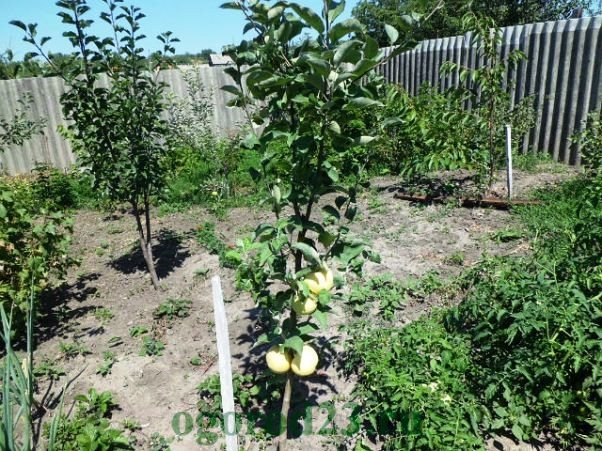

If the apple tree does not bloom
Novice gardeners often have a question about an apple tree growing but not flowering for several years.
The first point to which they should pay attention is the apple variety and the timing of its entry into the fruiting season. Perhaps the time has not yet come for a particular apple tree to please the gardener with a harvest. As mentioned earlier, apple varieties have different times of onset of fruiting.
If it's time for the tree to give birth, but there are no flowers, you need to use the advice of knowledgeable gardeners. In order for the tree to lay flower buds and the next year to yield a crop, you can perform the following operations:
- Fold vertically growing branches and secure them with pegs or struts at an angle of about 60º relative to the tree trunk.
- Young thin shoots can be fixed in the form of a ring.
- Cut off some of the roots of the tree.
All these actions will lead to the laying of flower buds, and the next year the tree will harvest.
Will the culture bear fruit
Experts say that it is possible to grow a full-fledged fruit-bearing crop from a seed, subject to a certain technology. However, you need to wait for the harvest from 5 to 10 years. If the effort is worth it, you can start! You will have to take care of a tree much more than when planting a plant with a seedling. If everything is left to chance, the fruits will not appear soon, they will be small, tasteless. Moreover, there is a high probability of getting wild. The sprout obtained from the seed is planted in open ground or grafted onto an adult apple tree. The survival rate in the second case is much higher, as is the likelihood of obtaining tasty, varietal fruits.
USEFUL PROPERTIES OF APPLES
For people living in the northern regions, the apple tree is the most reliable and complete source of vitamins. No wonder there is a popular saying: "In a house where apples are eaten, doctors have nothing to do."
Indeed, summer, autumn and winter apples for the whole year fully provide the human body with all the necessary vitamins and nutrients.
Apples contain: vitamins - A, B1, B2, B5, B6, B9, B12, C, E, PP; trace elements - potassium, sodium, calcium, magnesium, phosphorus, iron, sulfur, aluminum, phosphorus, vanadium, iodine, molybdenum, copper, nickel, chromium, zinc, selenium; useful substances - carotene, biotin, sugars, pectins, organic acids, flavonoids, glycosides, fiber and starch.
Experts note that apples grown in northern conditions contain approximately two times more of these substances than those that ripened in the south.


If near groundwater
In downstream areas, groundwater is close to the soil surface. Excess moisture can destroy the root system plants and it can rot.
In this case, the seedlings are planted on artificially raised tubercles up to 70 cm high. Subsequently, earth is added to the hillocks to form a gentle slope.
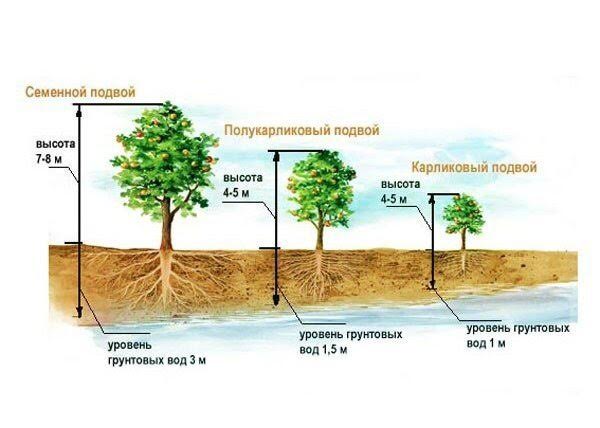

The choice of apple trees depending on the level of groundwater.
You can read expert advice on planting apple trees near groundwater here.
Seed selection
Initially, you need to select high-quality seeds that can sprout with appropriate care. It is recommended to remove them from ripe apples ripened in late summer and early autumn. The fruits are plucked from the extreme branches of the tree. There they are more illuminated by the sun, receive the necessary nutritional components. The seeds should be even, dark brown in color, without damage.
It is recommended to immediately rinse them under warm running water or soak them for 3 minutes in a bowl. This procedure is necessary to wash off the inhibitor that prevents seed germination. In the future, the inoculum is dried by laying it in one layer on gauze. The germination of seeds increases if they are used in the year of harvest. With long-term storage, the likelihood of sprouting is significantly reduced.
Apples from all over the world
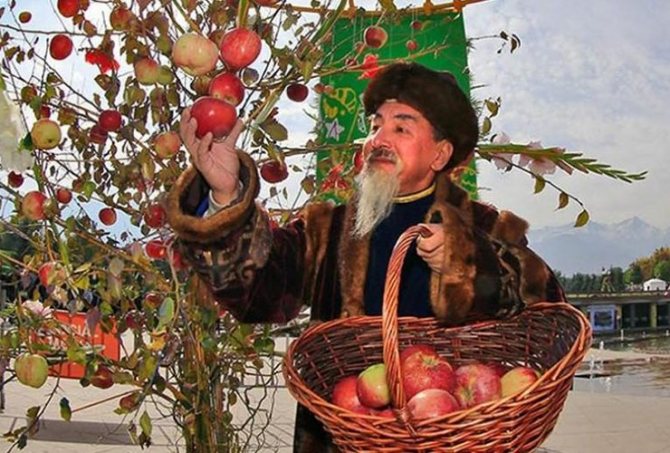

Apple Festival in Almaty (Kazakhstan)
How did the most common varieties of apples now appear in our area? Where are they grown? Each variety has its own story, sometimes very exciting.
Apple-tree varieties Aport
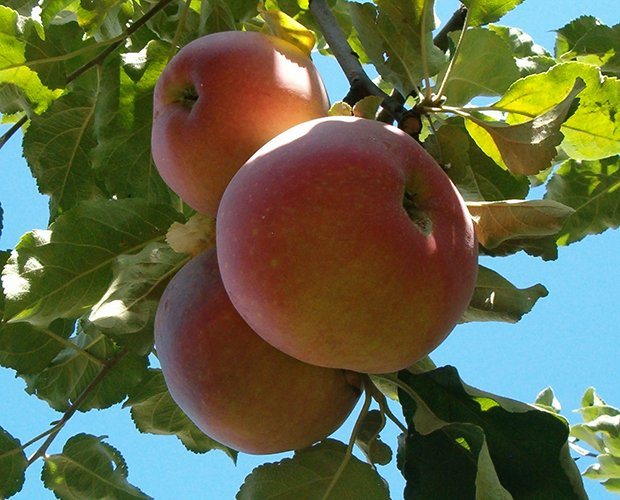

The famous apple variety Aport
The famous apple variety Aport, the mention of which can be found at the beginning of the 12th century, was brought from the Balkan Peninsula to what is now southern Romania and Ukraine in the 14th century. From there, Aport came to Russia and further in the 19th century to Kazakhstan, where he became famous: after crossing with the wild Sivers apple tree, a variety of the variety was obtained that is cultivated to this day. The apples ripen in September and can be stored until the end of the year. The aport was grown on an industrial scale, but was gradually replaced by new varieties and hybrids. Now it can be found in private farms and in private farmsteads.
The history of the apple variety Aport - video
Gala apple-tree
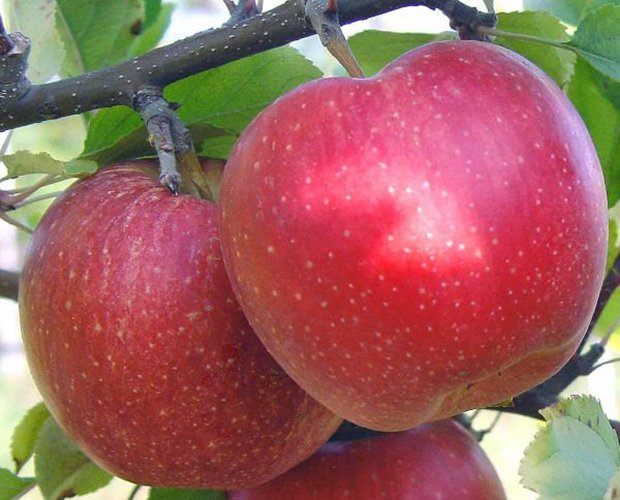

Many people fell in love with not very large bright sour-sweet apples of the Gala variety
Many people fell in love with not very large, weighing an average of about 130 grams, bright sour-sweet apples of the Gala variety. They ripen in autumn - from late September to November. They have a really great dessert taste, scored 4.6 out of five. Apples can be stored well for up to two to three months. Gardeners appreciate this variety for the regularity and abundance of fruiting. The not very high frost resistance of the tree allowed the State Sort Commission to recommend the variety for cultivation in the North Caucasus region, but Gala is grown by gardeners in other areas where there is no threat of prolonged winter frosts above -30 ºС.
Apple-tree varieties Golden Delicious


Excellent golden, as the name of this apple variety is translated from English, have been known since the end of the 19th century.
Excellent golden, as the name of this apple variety is translated from English, have been known since the end of the 19th century, when they were discovered by A.Kh. Mullins in the North American state of Virginia. The Federal State Budgetary Institution "Gossortkomissiya" recommends growing these apples in the North Caucasian and Northwest regions, since these apple trees have low indicators of frost and winter hardiness. This variety attracts gardeners by the fact that the harvest of apples, the weight of which is in the range of 140-180 grams, can be stored until May next year. Golden Delicious is self-fertile and needs pollinating trees, but already a two-three-year-old tree gives its first harvest.
Fuji apple tree


The beautiful and lingering Fuji apples were bred in Japan.
The beautiful and lingering Fuji apples were bred in Japan. This variety is especially actively used in Korea and China. In the central regions of our country, fruits are harvested in mid-October. The harvested crop lasts up to three months if stored at room temperature, and at a reduced temperature (in storage facilities, cellars, refrigerators) - until the next summer. It should be noted that the Fuji variety itself does not ripen properly in our area. Due to the lack of solar heat, apples do not collect enough sugar in Russia, in the north of Ukraine, in Belarus. Clones of this variety are grown here, ripening two to three weeks earlier - Kiku, Nagafu, Yataka and others. Clones of this variety Fujik, Fujina and Fujion are listed in the Russian State Register with the permission to grow them in the North Caucasus.
Fuji clones in the photo
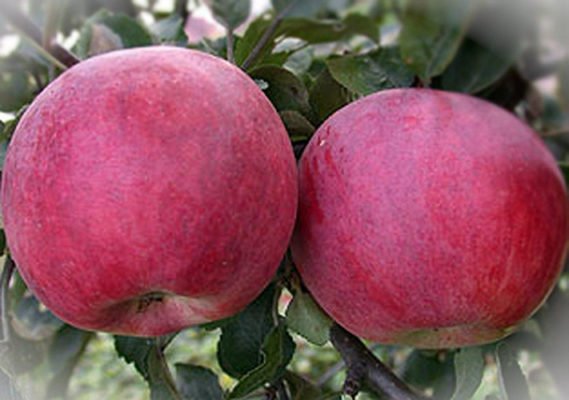

Beni shogun apples
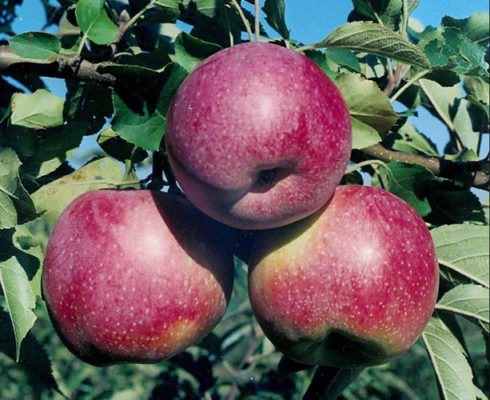

Fujina apples
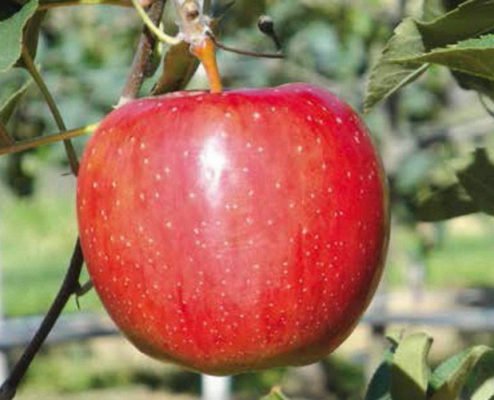

Fujion Apples


Fuji kiku apples


Toshiro fuji apples
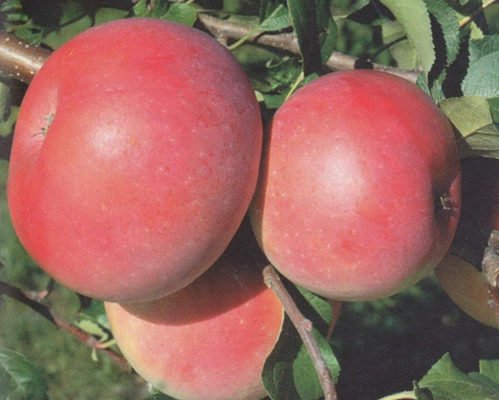

Yataka apples
Granny Smith apple tree
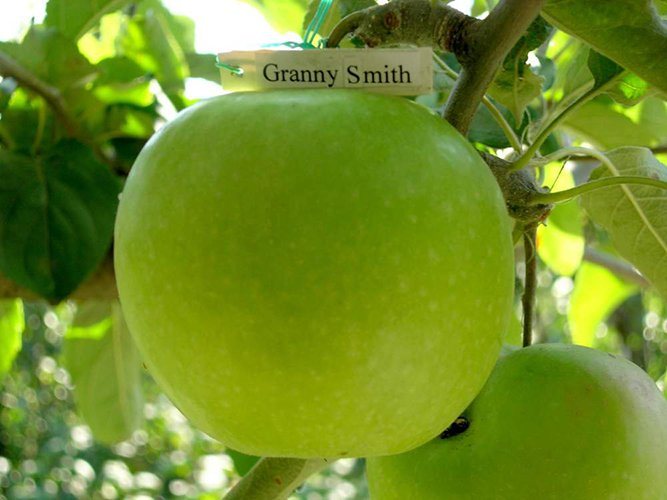

Granny Smith (Granny Smith) - a variety of Australian breeding
Granny Smith (Granny Smith) is an Australian variety of the second half of the 19th century. The apples of this variety are green and juicy. The apple tree prefers a temperate climate with mild winters. It grows well, for example, in Israel, where it is one of the most popular. FSBI "State Variety Commission", having entered Granny Smith in the State Register, indicated the North Caucasus as the recommended growing area. In the descriptions of the variety on the network, the weight of apples is indicated about 0.3 kg, when variety testing in Russia, Granny Smith apples reached about 0.15 kg.
Apple-tree varieties Mutsu
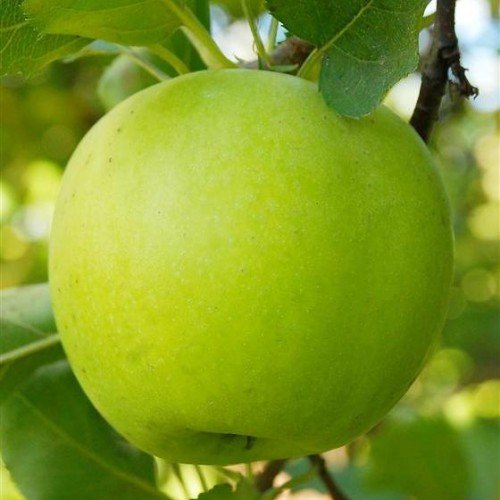

The Mutsu apple tree appeared in the 30th year of the last century in Japan
The Mutsu apple tree, which is also called Mutsu, Mutsa or Crispin, appeared in the 30th year of the last century in Japan. Over time, she ended up in European, Ukrainian and Russian gardens. The variety has an average winter hardiness and is grown in regions with mild winters. By mid-September, the fruits reach ripening maturity, consumer ripeness is gaining in one and a half to two months. They can be stored in the refrigerator until the spring of next year. The Mutsu apple tree requires regular treatments for diseases and pests.
Apple trees Mutsu near Odessa - video
Apple tree varieties Jonathan
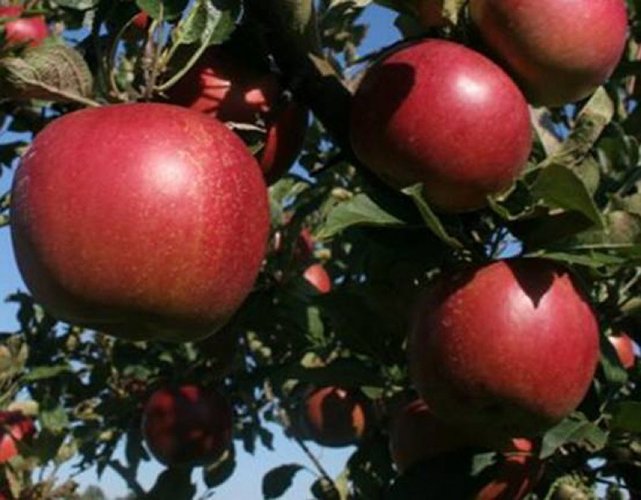

Jonathan is recommended for growing in Krasnodar and Stavropol Territories, Kabardino-Balkaria, Adygea, North Asetia-Alania, Karachay-Cherkessia, Chechnya, Ingushetia, Rostov Region
The well-known variety Jonathan, which is also called Oslamovsky, Horoshavka winter or Winter red, appeared at the beginning of the 19th century in the North American state of Ohio, where the climate is rather mild, winter temperatures are rarely below -1 ºС. A tree requires an appropriate climate to grow. The apple tree yields in the sixth, rarely in the fourth or fifth year of life. When the variety was included in the Russian State Register, Jonathan was recommended for cultivation in the Krasnodar and Stavropol Territories, Kabardino-Balkaria, Adygea, North Ossetia-Alania, Karachay-Cherkessia, Chechnya, Ingushetia, and the Rostov Region. In Russian conditions, apples are gaining 135-165 grams. Jonathan is a late winter cultivar that can be stored at low temperatures until May next year.
Apple-tree varieties Idared
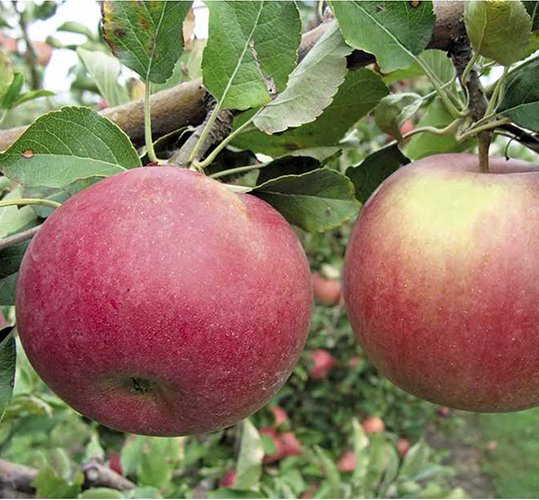

The first harvest of the apple tree Idared gives in the third-eighth year of life
Apple tree Idared is a variety of North American selection (Idaho state), therefore, it can be successfully grown only in areas where winter frosts do not fall below -20 ºС. The apple tree gives the first harvest in the third-eighth year of life. The FSBI "Gossortkomissiya", which included Idared in the list of recommended varieties, indicated the North Caucasus and the Lower Volga region as the cultivation area, and in 2019 added the Kaliningrad region in north-west Russia to this list. Idared apples are grown on an industrial scale in the Krasnodar Territory. Apple trees of this variety also grow successfully in Ukraine, where they were first grown in the steppe and forest-steppe zones, and later in southern Polesie. In Poland, Idared occupies a leading position among the exported apple varieties.
Selection and preparation of seedlings
Apple tree seedlings can be bought at the nursery or purchased from private gardeners. When buying, be sure to find out the variety of the apple tree, the requirements for the composition of the soil and the peculiarities of caring for the trees. One-year and two-year-old apple trees are suitable for planting. They are easy to distinguish - two-year-old seedlings have time to grow lateral branches. Annual seedlings take root better, but two-year-olds will begin to yield a year earlier.


When choosing seedlings prepared for sale, pay attention to their root system. The root should have a triple branch, each of which is 30 cm long. The presence of numerous fibrous roots is important - they help the tree to take nutrients and moisture from the soil. The root system of the seedling should be moist, the root cuts at the ends should be white. If the cuts are brown, then the tips of the roots are dry or frostbitten, they are cut a couple of centimeters before planting to get to the living tissue.
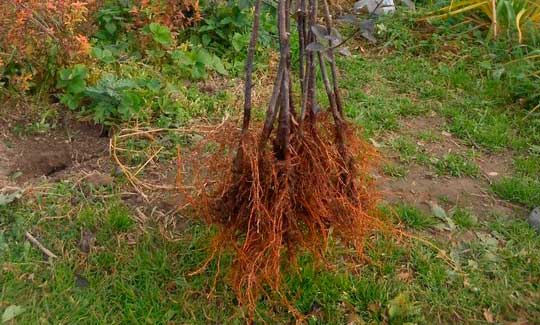

To protect the roots of the seedling from drying out during transportation, they are wrapped in a damp cloth. Before planting, it is recommended to process the roots in the traditional way - to dip them in a liquid mixture of water, clay and cow dung, and then dry them a little. This procedure not only protects the roots from drying out, but also helps to feed the plant in the first time after planting.


Features in the regions
Moscow suburbs
In central Russia, in particular, in the Moscow region, it is better to plant apple trees from mid-September to mid-October. This period of the year is characterized by high humidity, frequent precipitation, and this has a beneficial effect on the development of the roots of the seedling, they have time to get stronger.
Planting an apple tree in autumn Leningrad region principled no difference.
Read more about the timing of planting and caring for apple trees in the Moscow region here.
Siberia
In Siberia, it is necessary to plant apple trees no earlier than mid-May... For cultivation in harsh winters and short cool summers, you need to carefully approach choice of variety.
Large-fruited varieties will not grow in Siberia. It is better to use winter-hardy varietiesthat can withstand temperatures as low as -50 degrees.
How stratification is carried out
To improve the chances of germination, stratification is used - the creation of conditions close to natural, to accelerate seed growth. The procedure is carried out in the following sequence:
- mix the seeds with a mixture of peat and sand (ratio 1: 3);
- after mixing the seeds with sand, the resulting substance should be moistened;
- the grains should not be in contact with each other to avoid the spread of mold;
- water must be poured into a vessel until it covers the entire substrate;
- the seed mixture should stand for 6 days;
- after swelling, the seeds are placed in the refrigerator for a couple of months.
Instead of peat and sand, you can take peat and wood sawdust, sand and sawdust with activated carbon.
The state of the substrate must be monitored every three days - watering and preventing mold.
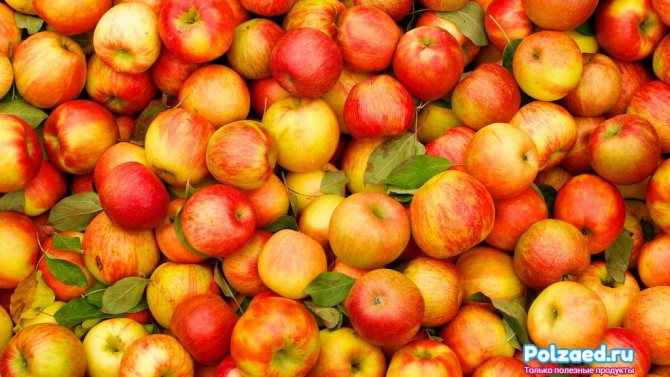

A culture that has grown from a seed does not inherit maternal properties. That is why its fruits will always be wild, which is used as a seed stock.
Pit preparation and seedling planting
When planning to plant several apple trees, place the holes in a row with a step of 3 meters, the distance between the rows should be 6 meters. This will allow the crowns to form properly. The seedling pit is a round depression with a diameter of 1 meter and a depth of about 0.7 meters. The pit walls are steep. Fold the fertile layer of the excavated soil on one side of the pit, the bottom layer of soil on the other. If the soil is clay, make the hole deeper and lay drainage from stones, scraps of wood, empty cans on the bottom. In sandy soil, lay a layer of oily clay at the bottom of the pit and tamp.
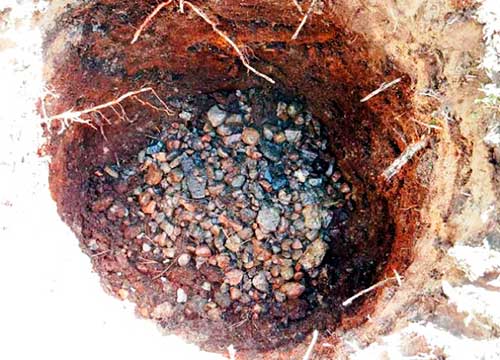

Paste a VALID AdSense code in Ads Elite Plugin options before activating it.
A stake with a diameter of about 5 cm should be driven into the center of the pit. The lower part of the stake should be pre-burned on a fire to protect it from decay. The stake should rise 40 - 45 cm above the edge of the pit. Mix the top layer of soil removed from the pit with humus, compost, add organic fertilizers or peat. If the soil is clayey, sand is added to the mixture. The prepared soil mixture should be poured into a hole, forming a small mound - over time, the soil will shrink greatly. From the bottom soil removed from the pit, make a curb around the circumference of the pit, scatter the remains along the aisles. After a month (or in spring), a seedling can be planted in the pit.
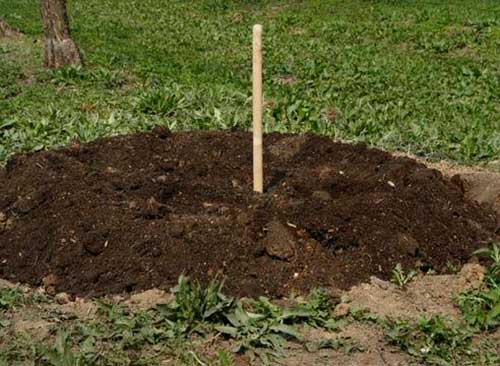

The timing of planting apple trees depends on climatic conditions. A tree planted in the fall should have time to take root before the onset of frost. In spring, seedlings must be planted before bud break. In the prepared hole, dig a hole so that the stake is in the center, but with a slight offset to the south. The size of the hole is determined by the size of the root system of the apple tree. Pour black soil at the bottom of the hole - it will protect the roots from direct contact with fertilizers.


The trees should be planted together. One person inserts a seedling into the hole on the north side of the peg and holds it so that the root collar (transition of greenish bark into brown) is located 5 cm above the surface of the hole. If a seedling is buried or planted too high, it will not grow well and will later begin to bear fruit. The second person should spread the roots and carefully sprinkle them with fertile soil. Tamp the soil carefully, paying particular attention to the edges of the hole. In the process of filling the roots with earth, the seedling must be slightly shaken so that the soil fits tightly, without voids, to the roots. This will keep them from drying out.
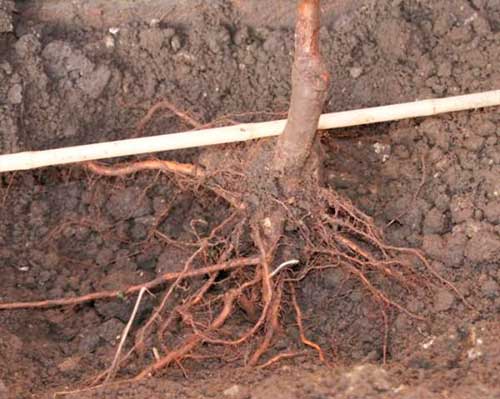

Sowing technology
After stratification under artificial conditions, the seeds are planted in boxes, pots, cups. Drainage from broken glass, brick, crushed stone, gravel is laid out on the bottom. Then a layer of fertile soil is covered. The strongest, hatched seeds are laid out at a distance of 20 cm from each other, or 2 in each pot. Sowing depth is not more than 15 mm.
Water thoroughly. Placed in a bright, warm place, but away from direct sunlight.Before the first shoots appear, you can cover the container with cling film. In this case, a greenhouse effect is created, sprouts appear faster.
When sowing seeds in open ground, mulch is harvested in the fall in the spring, and the first shoots are expected to appear. Until autumn, they will grow in the same place. For the winter, they clean it in a greenhouse or a room.


